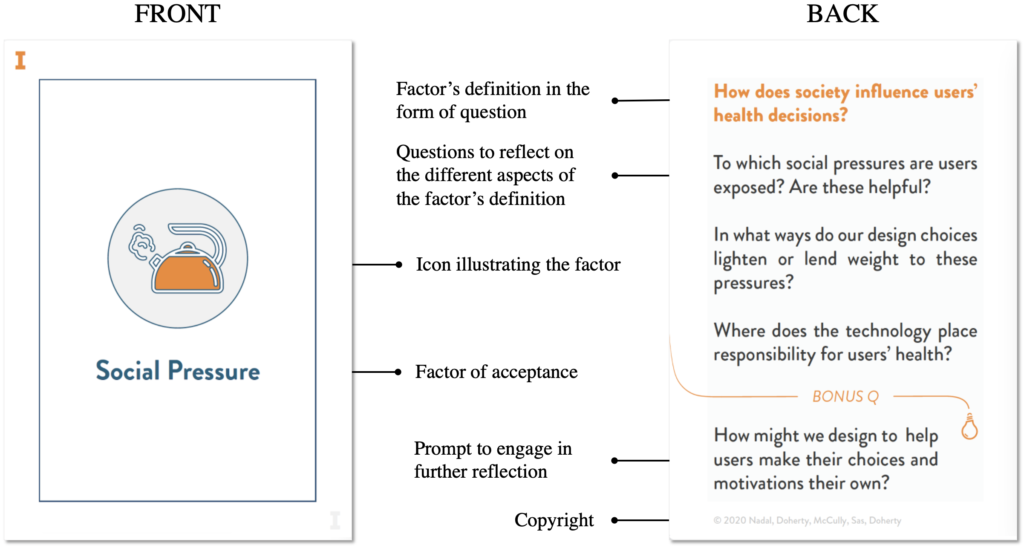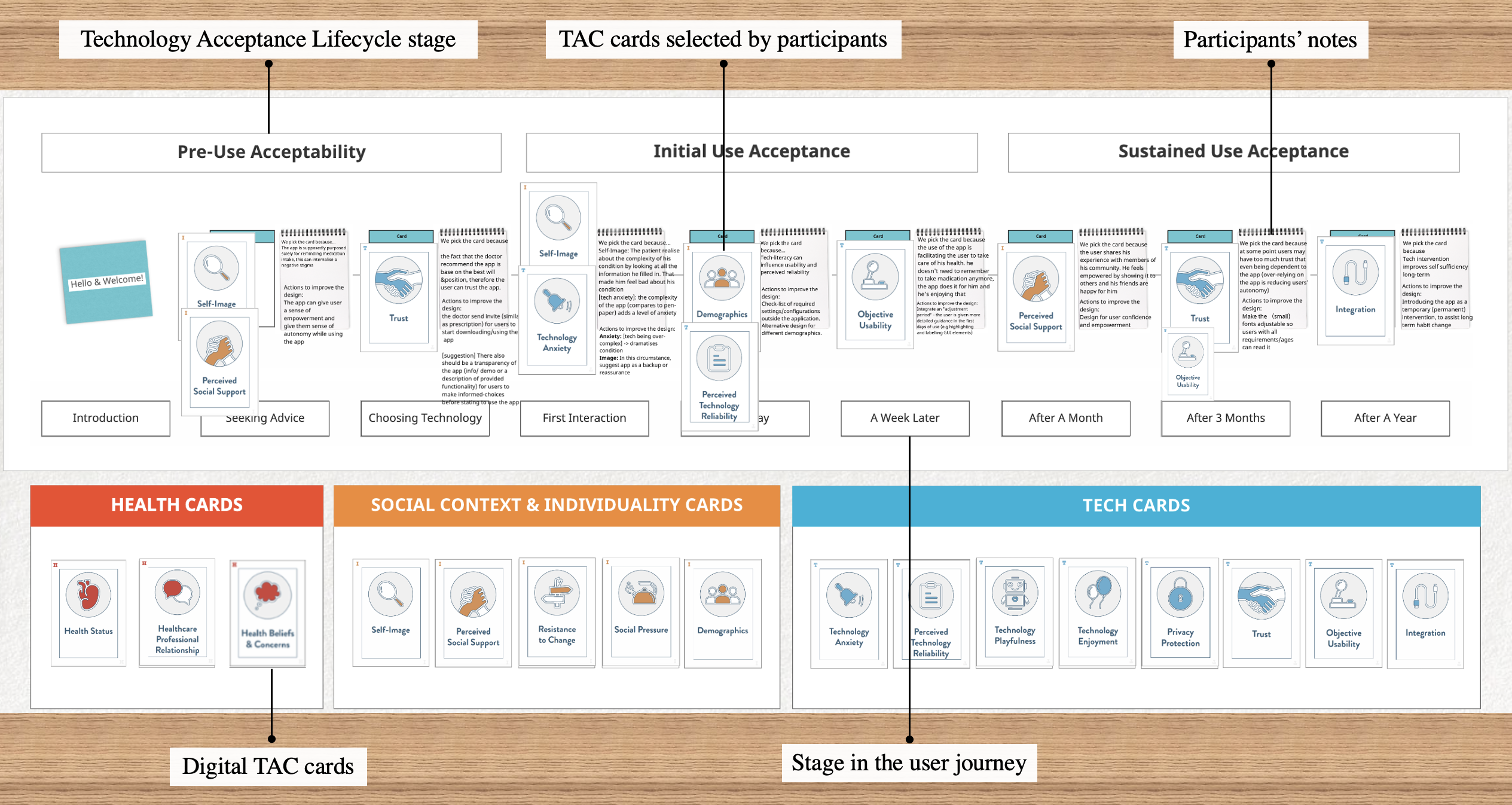Ever bought a fitness device and only used it a couple of times?
Any apps on your phone that you have not opened in the past year?
Technology abandonment is a long-standing issue for HCI designers. In healthcare, technology is increasingly used to support diagnosis, treatment, and symptom monitoring. In this particular context, if I am not willing to use the technology, I might not be able to receive care. And similarly, if I give up the technology before completion of my treatment, I might not get its full benefits.
User acceptance, a key issue difficult to design for
Our acceptance of technology plays a key role in our willingness to take on and engage with a system. That’s why when creating new healthcare technologies, designers should address the potential barriers (and facilitators) of user acceptance.
When looking at how HCI designers address this question, we noticed a gap between theory and practice. In fact, facing the very dense research field that is technology acceptance, designers were often unsure of how to use existing theories in their own practice.
Designing for acceptance with the TAC Toolkit
In order to help bridge this gap, we created the Technology Acceptance (TAC) Toolkit. The goal of the TAC Toolkit is to help designers create health technologies that 1) people are willing to use, and 2) keep using in the long term. The toolkit — which is available here — contains:
- 16 design cards
- 3 personas
- 3 temporal multi-choice scenarios
- 1 think-space


Putting this new design tool to the test
The TAC Toolkit was evaluated across a series of 7 workshops, with 21 digital health designers. During the workshops, designers worked in groups of 3, and used the toolkit to co-design (hypothetical) health technologies. For the participants, this workshop setting involved a combination of physical and virtual. Indeed, the designers could use the physical TAC cards, in combination with the virtual think-space, personas and scenarios. Following the workshops, we interviewed each designer about their experience with the TAC Toolkit and the way we explored its use in the workshop setting.
What designers thought of the TAC toolkit
The designers’ feedback indicated that the TAC toolkit was very well received.
« I was not familiar with all these factors [of acceptance]… My spectrum and my way of speaking changed around that topic. »
Interview with Designer P21
Specifically, they reported that working with the toolkit helped them in several ways by:
- Challenging their preconceptions on user acceptance.
- Providing a clear understanding of the factors of acceptance.
- Shaping their design decisions to support user acceptance.
- Facilitating conversations, regardless of designers’ experise.
- Supporting a more ethical design.
In conclusion, the TAC Toolkit shows great potential to complement a user-centred design process, in order to create health technologies that are accepted by people.
A video presenting this work @ CHI 2022
To cite this research
Nadal, C., McCully, S., Doherty, K., Sas, C., Doherty, G. (In Press) The TAC Toolkit: Supporting design for user acceptance of health technologies from a macro-temporal perspective. In Proceedings of the 2022 CHI Conference on Human Factors in Computing Systems. ACM.

